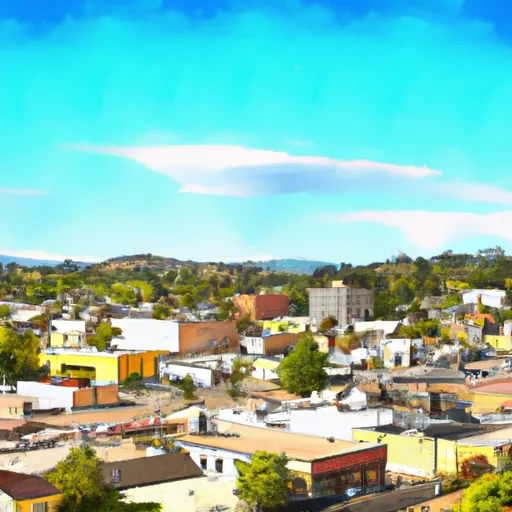-
 Snoflo Premium
Snoflo Premium
Get unlimited access to all our content
With no Ad interruptions! - Start Your Free Trial Login with existing account
Livingston
Eden Index
Climate
9.1
•
Recreation
2.5
•
Community
1.9
•
Safeguard
5.0/10

Livingston, California is a small town located in the central part of the state. It has a Mediterranean climate with hot, dry summers and mild, wet winters. Summers in Livingston can be sweltering, with temperatures often exceeding 100 degrees Fahrenheit, while winters are more temperate, with temperatures rarely dropping below freezing.
In terms of hydrology constituents, Livingston sits in the San Joaquin Valley, which is known for its fertile agricultural land. The town is surrounded by farmland and relies heavily on irrigation for its crops. The area is also intersected by the Merced River and the California Aqueduct, which provide water for both agricultural and residential use.
Despite being a small town, Livingston offers various outdoor recreation opportunities. The nearby Merced River is popular for fishing, kayaking, and swimming during the summer months. The surrounding agricultural fields provide ample space for hiking or biking with scenic views. Additionally, the town has several parks and green spaces where residents and visitors can enjoy picnicking, sports, or simply relaxing outdoors.
In summary, Livingston, California experiences a Mediterranean climate with hot summers and mild winters. Its hydrology constituents revolve around irrigation and the presence of the Merced River. Outdoor enthusiasts can enjoy activities such as fishing, kayaking, hiking, and picnicking in the surrounding areas.
What is the Eden Index?
The Snoflo Eden Index serves as a comprehensive rating system for regions, evaluating their desirability through a holistic assessment of climate health, outdoor recreation opportunities, and natural disaster risk, acknowledging the profound impact of these factors on livability and well-being.
Climate Health Indicator (CHI): 9.1
Livingston receives approximately
322mm of rain per year,
with humidity levels near 60%
and air temperatures averaging around
17°C.
Livingston has a plant hardyness factor of
9, meaning
plants and agriculture in this region tend to thrive here all year round.
By considering the ideal temperature range, reliable water supplies, clean air, and stable seasonal rain or snowpacks, the Climate Health Indicator (CHI) underscores the significance of a healthy climate as the foundation for quality living.
A healthy climate is paramount for ensuring a high quality of life and livability in a region, fostering both physical well-being and environmental harmony. This can be characterized by ideal temperatures, reliable access to water supplies, clean air, and consistent seasonal rain or snowpacks.
Weather Forecast
Streamflow Conditions
San Joaquin
Area Rivers
San Joaquin
Snowpack Depths
San Joaquin
Reservoir Storage Capacity
San Joaquin
Groundwater Levels
Recreational Opportunity Index (ROI): 2.5
The Recreational Opportunity Index (ROI) recognizes the value of outdoor recreational options, such as parks, hiking trails, camping sites, and fishing spots, while acknowledging that climate plays a pivotal role in ensuring the comfort and consistency of these experiences.
Access to outdoor recreational opportunities, encompassing activities such as parks, hiking, camping, and fishing, is crucial for overall well-being, and the climate plays a pivotal role in enabling and enhancing these experiences, ensuring that individuals can engage in nature-based activities comfortably and consistently.
Camping Areas
| Campground | Campsites | Reservations | Toilets | Showers | Elevation |
|---|---|---|---|---|---|
| Modesto Reservoir | 150 | 212 ft | |||
| Los Banos Creek - San Luis Reservoir | 15 | 379 ft | |||
| Turlock Lake State Rec Area | 66 | 126 ft | |||
| McConnell State Rec Area | 21 | 122 ft |
Nearby Ski Areas
Catastrophe Safeguard Index (CSI):
The Catastrophe Safeguard Index (CSI) recognizes that natural disaster risk, encompassing floods, fires, hurricanes, and tornadoes, can drastically affect safety and the overall appeal of an area.
The level of natural disaster risk in a region significantly affects safety and the overall livability, with climate change amplifying these risks by potentially increasing the frequency and intensity of events like floods, fires, hurricanes, and tornadoes, thereby posing substantial challenges to community resilience and well-being.
Community Resilience Indicator (CRI): 1.9
The Community Resilience Indicator (CRI) recognizes that education, healthcare, and socioeconomics are crucial to the well-being of a region. The CRI acknowledges the profound impact of these elements on residents' overall quality of life. By evaluating educational resources, healthcare accessibility, and economic inclusivity, the index captures the essential aspects that contribute to a thriving community, fostering resident satisfaction, equity, and social cohesion.

